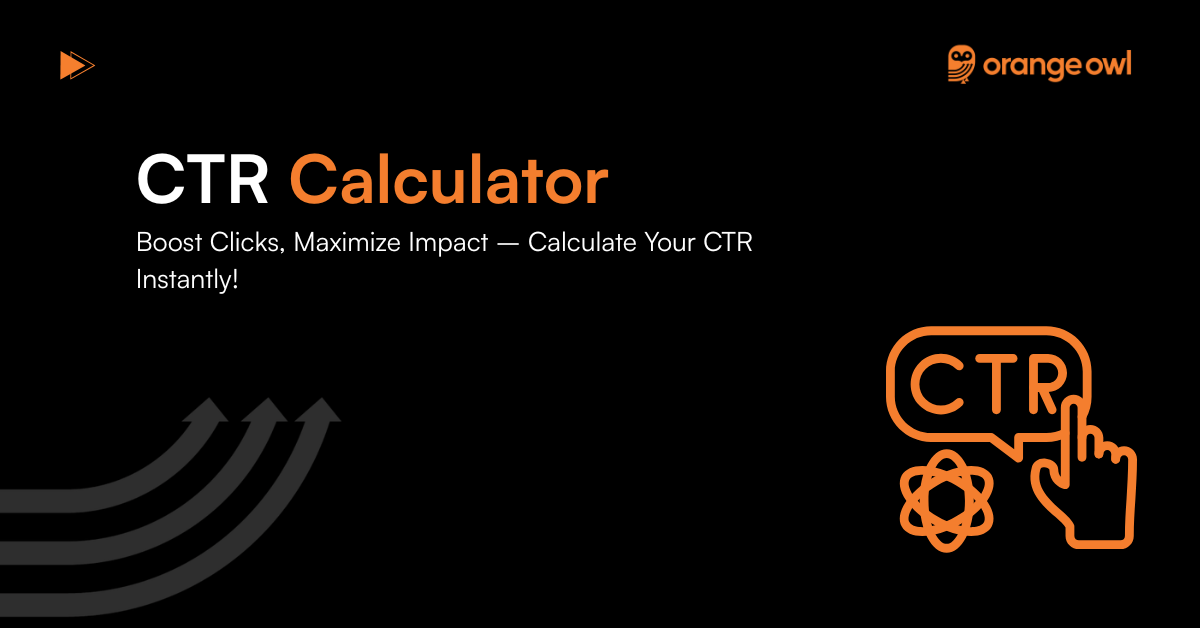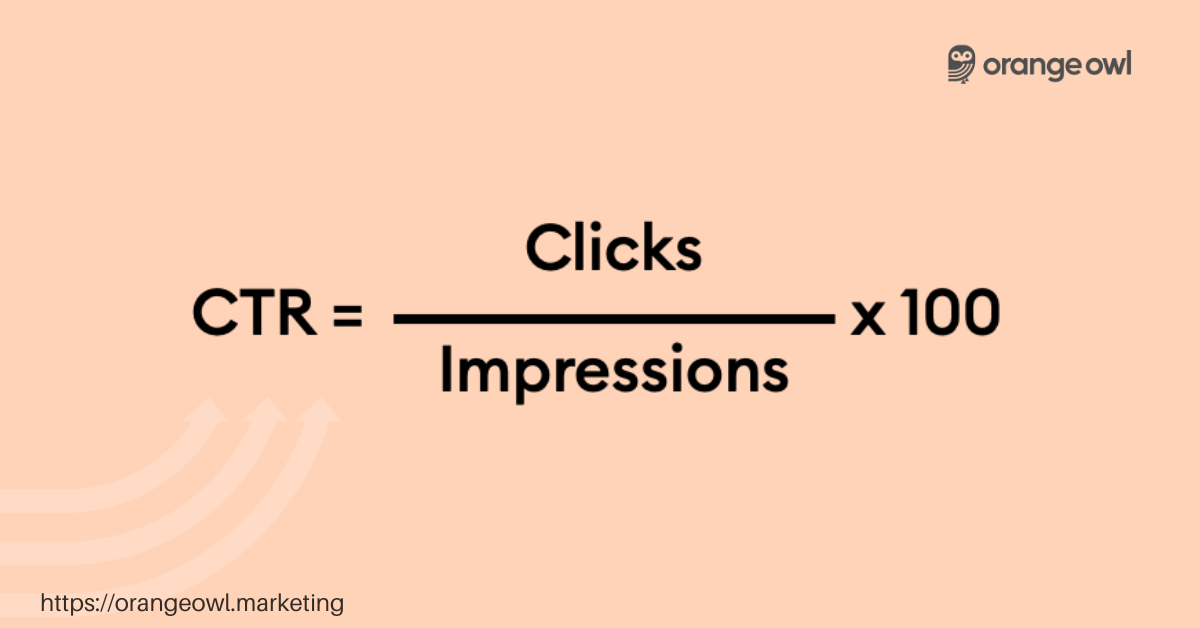CTR Calculator

Table of Contents
What is CTR (Click-Through Rate)?
CTR stands for Click-Through Rate, a key metric in digital marketing that tells you how many people clicked on your ad or link out of the total who saw it. It’s a strong indicator of how engaging your ad, keyword, or content is.
Whether you’re running Google Ads, Meta campaigns, email newsletters, or SEO efforts, CTR helps measure how effectively your message is driving interest and action.
Example:
If 1,000 people see your ad and 50 of them click on it, your CTR is 5%.
How to Calculate CTR
CTR is simple to calculate but powerful in what it reveals.

CTR Formula: CTR = (Number of Clicks ÷ Number of Impressions) × 100
Example:
- Impressions: 5,000
- Clicks: 250
- CTR = (250 ÷ 5,000) × 100 = 5%
This means 5% of viewers found your ad compelling enough to click.
What’s a Good CTR?
There’s no universal “perfect” CTR—it varies by platform, industry, and campaign type. But here are some ballpark figures:
- Search Ads (Google): 4–6% is strong
- Display Ads: 0.5–1.5% is common
- Email Campaigns: 2–5% CTR is generally considered good
- Social Media Ads (Meta, LinkedIn): 1–3% is decent
Remember, higher CTR often means your messaging is relevant and your targeting is on point.
Why CTR Matters
CTR is the first checkpoint in your performance funnel. If people aren’t clicking, they’re not converting. A strong CTR indicates your ads are resonating. A low CTR? Time to rethink the creative or targeting.
CTR is beneficial for:
✅ Evaluating ad performance
✅ A/B testing creatives
✅ Diagnosing drop-offs in your funnel
✅ Improving Quality Scores in Google Ads (which lowers CPC)
What Affects Your CTR?
Several factors influence your CTR, such as:
- Ad Copy & Visuals: Clear, emotional messaging drives more clicks
- Headline Quality: Strong CTAs (Call-To-Actions) help boost engagement
- Audience Targeting: Right message + right people = high CTR
- Placement: Ads in prime placements often get higher CTR
- Device Type: Mobile users behave differently from desktop users
What Can Hurt Your CTR?
If your CTR is low, some common culprits might be:
- Generic or uninspiring ad copy
- Poor design or irrelevant creatives
- Weak or unclear calls-to-action
- Broad or misaligned audience targeting
- Ad fatigue from overexposure
How Marketers Use CTR
CTR is more than just a number—it’s insight. Smart marketers and growth teams use CTR to:
- Benchmark creative performance
- Guide audience refinement
- Diagnose underperforming campaigns
- Optimise for quality scores in Google Ads
- Spot early signs of campaign fatigue
Using a CTR Calculator
A CTR Calculator takes the manual work out of it. Just plug in:
- Total Impressions
- Total Clicks
…and it instantly tells you your click-through rate.
Want to go deeper? Use it to:
✅ Compare across campaigns
✅ Evaluate channels (Google vs Meta)
✅ Monitor improvement over time
How to Improve Your CTR
Here are proven ways to improve CTR without inflating your budget:
- Use powerful headlines with urgency or value
- Test different ad creatives and visuals
- Keep your messaging relevant to your audience
- Implement strong calls-to-action (CTAs)
- Leverage emojis, numbers, and personalisation (in emails or ads)
- Regularly refresh creatives to avoid fatigue
When Should You Track CTR?
CTR is essential when you’re running any impression-based campaign, including:
- Google & Meta Ads
- SEO meta descriptions
- Email marketing campaigns
- Sponsored social posts
- Influencer collaborations
- Programmatic and display ads
How Orange Owl Helps You Boost CTR
At Orange Owl, we help brands craft messages that cut through the noise. From laser-sharp targeting to high-impact creatives and continuous A/B testing, we help you boost CTRs while staying aligned with your brand voice.
Because higher clicks mean more conversations, more conversions, and smarter growth.
Frequently Asked Questions (FAQs) on CTR
A good CTR depends on the platform and industry, but general benchmarks are:
Google Search Ads: 3–5% is considered strong
Google Display Ads: 0.5–1% is average
Facebook Ads: Around 1–2% is typical
Email Campaigns: 2–5% CTR is considered good
Always benchmark against your own past performance and industry standards.
Absolutely. CTR is often higher on mobile due to screen size, thumb-friendly design, and impulse behavior. However, conversions may be lower, so it’s important to analyze mobile CTR alongside conversion rate and bounce rate.
CTR gives an initial signal of interest, but not deep intent. A user may click out of curiosity without the intent to convert. Pair CTR with metrics like bounce rate, session duration, and conversion rate for better insights.
A/B testing helps you isolate what drives a higher CTR, such as headline, CTA, or imagery. However, a winning variation with high CTR must also be checked for post-click performance to ensure quality traffic, not just curiosity clicks.
Yes. User behavior varies by time and day. B2B ads may perform better during work hours, while B2C ads may have better CTRs during evenings or weekends. Analyzing performance trends over time helps optimize for timing.
High CTR with a high bounce rate may indicate misleading ad copy or landing pages that don’t meet user expectations. Monitoring both helps ensure you’re attracting the right visitors, not just clicks for the sake of clicks.
